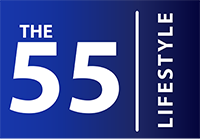Men 50 and over understand better than anyone our bodies are changing, especially after hitting that half-century mark. Our metabolism slows down, weight gain and muscle loss tend to be more common, and we’re burning fewer calories, resulting in noticeable difficulty in shedding unwanted weight. As such, we need to keep on top of every available topic, field of study, and industry discipline to keep our workouts effective. One of those topics we should know about is Excess Post-exercise Oxygen Consumption, or (EPOC). We asked our team to break this down and how EPOC can work for us as we plan our programs.
What is EPOC?
Have you ever heard someone say that you burn calories even after finishing your workout? This is due to the EPOC effect, also known as the “afterburn effect.”
Your body consumes more oxygen following intense activity to restore its normal resting level. The increased oxygen is used to replenish your body’s fuel stores, restore blood oxygen levels, balance hormones, repair muscle and connective tissue, and help your body recover from training.
More energy is needed for your body to consume more oxygen and restore its resting level, meaning more calories are burned. Hence, the reason we burn more calories after a workout than before.
What are the benefits for men over 50?
As we age, we tend to be less active and lose more muscle mass, resulting in a decreased metabolism. In other words, the slower your metabolism, the fewer calories you burn. This shows that staying active and working out is incredibly important as you age. Still, the type of workouts you do plays a significant role.

By increasing your EPOC effect (aka afterburn) through exercise, you can burn more calories and, in turn, temporarily speed up your metabolism.
Let’s discuss how this works and other benefits of EPOC, specifically for men over 50.
1. EPOC burns more calories
We’ve discussed how EPOC or the “afterburn” effect burns more calories by using energy to increase oxygen uptake to recover from intense activity. By diving deeper into this concept, we can look at it in terms of the metabolism converting the nutrients you consume to adenosine triphosphate (ATP), the fuel or energy your body uses for your workouts.
At the start of your workout, your body doesn’t use oxygen to produce energy (anaerobic pathway) but, instead, uses stored ATP. More energy is then needed to make more ATP which is oxygen-dependent (aerobic energy pathway).
Exercise that places a greater demand on the anaerobic energy pathways can increase the need for oxygen after the training, thereby enhancing the EPOC effect. Exercise that consumes more oxygen ultimately burns more calories. Examples include:
- HIIT,
- Strength circuit training,
- Sprint intervals,
- AMRAP (as many reps as possible)
How long does EPOC last?
Increased oxygen uptake and calorie burn may be elevated for 15 minutes to 48 hours post-exercise. However, high caloric expenditure (calorie burning) is influenced by many factors such as;
- Intensity & duration of exercise,
- Mode of training,
- Fitness level, and
- Gender


2. Improves your heart health
EPOC isn’t just great for burning more calories; it can also improve your heart health. One type of workout that significantly increases the afterburn effect is High-Intensity Interval Training (HIIT), because it increases your VO2 max.
VO2 max is the maximum rate of oxygen your body uses during exercise and is an overall indicator of your cardiovascular health and endurance capacity. Increasing your VO2 max with HIIT workouts, therefore, have powerful heart health benefits.
3. Strengthen the muscles surrounding your joints
Specific types of workouts, such as HIIT and strength training, increase muscle strength and mass. Strength training with weightlifting exercises also places a greater demand on the anaerobic pathways. Remember how we mentioned this increases the need for oxygen after the workout, thereby enhancing the afterburn effect?
The oxygen consumed due to the EPOC effect restores muscle glycogen and rebuilds muscle proteins damaged during exercise.
Increasing your muscle strength and mass, especially when you’re older, may decrease the risk of sarcopenia and muscle loss with age, which can lead to fractures, weakness, and early death.
Muscles supporting your joints also help absorb the forces that impact them. So, by strengthening these muscles, you ultimately protect your joints from damage like arthritis.
How to design your workouts to boost your EPOC
Here are three ways you can increase the intensity of your workouts and burn more calories with the afterburn effect;
1. Include HIIT exercises
HIIT stands for high-intensity interval training. You alternate between short periods of intense anaerobic exercise with rest periods. Some examples of HIIT exercise are;
- Intervals of 20 seconds sprint followed by 40 seconds jog/ walk.
- Using a stationary bike, pedal as fast as possible for 30 seconds and rest for 30 seconds.
- Squat jumps for 40 seconds with 20 seconds rest in between.
More intense activities put greater stress on the body and then require more energy, as well as more oxygen, is needed to restore it to its resting level. EPOC is therefore influenced by the intensity, not the duration of exercise.
2. Incorporate more exercises that involve fast-twitch muscle fibers (e.g., sprints) in your workouts.
Fast-twitch muscle fibers are involved in quick, powerful movements such as sprinting or weightlifting. They are activated for sudden and significant bursts of activity, use a lot of energy quickly, and create energy anaerobically – meaning more oxygen is needed post-workout.
3. Do more anaerobic exercises than aerobic.
All of the exercises that increase the EPOC effect use the anaerobic pathway. This is because activities that require your body to produce energy without oxygen (anaerobically) create an oxygen deficit that needs to be compensated for during recovery.
Anaerobic exercises use quick bursts of energy and are performed at maximum effort for a short time. Examples include;
- High-intensity interval training (HIIT)
- Strength training (weight lifting or resistance training)
- Calisthenics like plyometrics, jump squats, or box jumps.
- Sprinting (while running, cycling, or swimming)
Final Thoughts on Excess Post-exercise Oxygen Consumption (EPOC)
EPOC is an excellent way for you to increase your metabolism and burn extra calories temporarily. In addition, you can lose that excess weight you’ve always wanted, improve your heart health and support your joints by incorporating more intense workouts such as HIIT.
We hope the information in our piece – Excess Post-exercise Oxygen Consumption (EPOC), can help you with an informed decision on your workout regimens. If you want to continue further reading on home-based exercises that outline active lifestyles, check out our blogs on resistance band training and other cardio exercises.
As always, if you need something you can’t find here, reach out to us through the Contact page or leave a comment below. Please use our approved affiliate links to explore the options available to you, we appreciate you support!


When she’s not seeing clients, she’s a freelance writer for health & wellness websites and brands. You can see more of her work at https://santoshasisters.com/ and her portfolio at https://eugenie.contently.com/.
The 55 Lifestyle is a participant in the Amazon Services LLC Associates Program, an affiliate advertising program designed to provide a means for sites to earn advertising fees by advertising and linking to Amazon.com.









